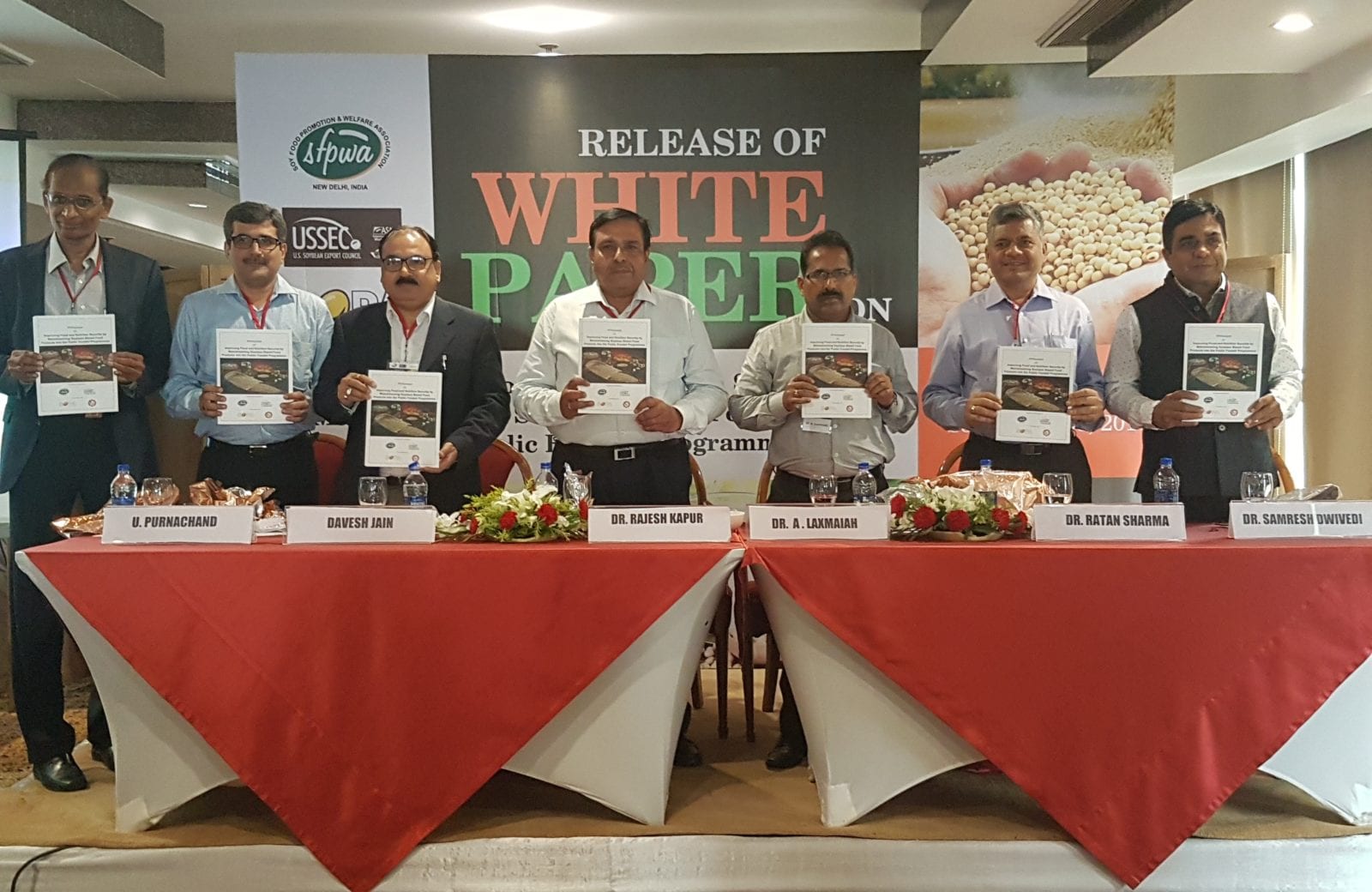USSEC India Launches Whitepaper on Soy Nutrition
- Category:
- General News
- Soy Foods

USSEC India recently launched a whitepaper on Soy Nutrition titled “Improving Food and Nutrition Security by Mainstreaming Soybean Based Food products into the Public Funded Programs.” This whitepaper was developed and launched in collaboration with the Soy Food Promotion and Welfare Association (SFPWA), Soy Processors Association (SOPA) and the Solvent Extractors Association of India (SEAI).
As per USSEC Director – India & ASC Soy Food Program Dr. Ratan Sharma, there was a dire need for such a reference dossier on soy nutrition in India in order to provide the proven scientific and nutritional facts on the soy and also to rebuttal the misconceptions on soy and soy products on social media and other communications networks. In its meetings with the government officers and other decision making authorities for promoting soy in human consumption, USSEC and other stakeholders realized that there should be an authoritative documentation of the references on soy nutrition for ready reference to the government and other relevant organizations. The Indian government is working hard to eliminate the malnutrition problem in the country and is paying serious attention to food and nutrition security by providing a nutritious diet in various nutrition intervention programs. The government of India runs the world’s largest feeding and supplementary nutrition programs, covering more than 240 million beneficiaries.
The prime objective of developing this whitepaper was to sensitize various stakeholders about the benefits of soy for food and nutrition security of India, benefits of soy consumption in improving the health status of the Indian population, and to develop an extensively reviewed and ratified whitepaper to achieve food and nutrition security through the consumption of soy. USSEC and its partnering associations strategically planned and developed this whitepaper by involving other stakeholder members from soy processing associations, processors, and the nutrition institutions of the country. It was first drafted by USSEC in association with the SFPWA and widely circulated to the scientific community, nutrition and academic institutions, leading soy food processing companies, government departments including the food and nutrition board, ministry of women and child development, department of biotechnology, and the national Institute of Nutrition (NIN) of the country. All of their suggestions were incorporated in the final version of the whitepaper in a few phases of this review, validation, and endorsement of the facts cited in this white paper.
Finally, this whitepaper was approved and forwarded by the director of NIN in the presence of all important soy partners and government officers. NIN falls under the ministry of health and family welfare and is considered one of the premium and best authoritative nutrition institutes in the country. They are the authority to approve the nutritional ingredients for the government feeding and social welfare programs and in general. The endorsement and forwarding of this white paper by the national Institute of Nutrition of India will give immense value to this whitepaper in order to recognize soy as a nutritional ingredient for the food and nutrition security of India.
USSEC and other proponent organizations of the whitepaper are working to develop a road map for the recommendations of the whitepaper in the promotion of soy and finally ensure the implementation of these recommendations. India’s soy food industry recognizes the efforts for the launch of this white paper. This will give a major boost to support the soy nutrition in general and will increase the soy utilization opportunities in the region.


